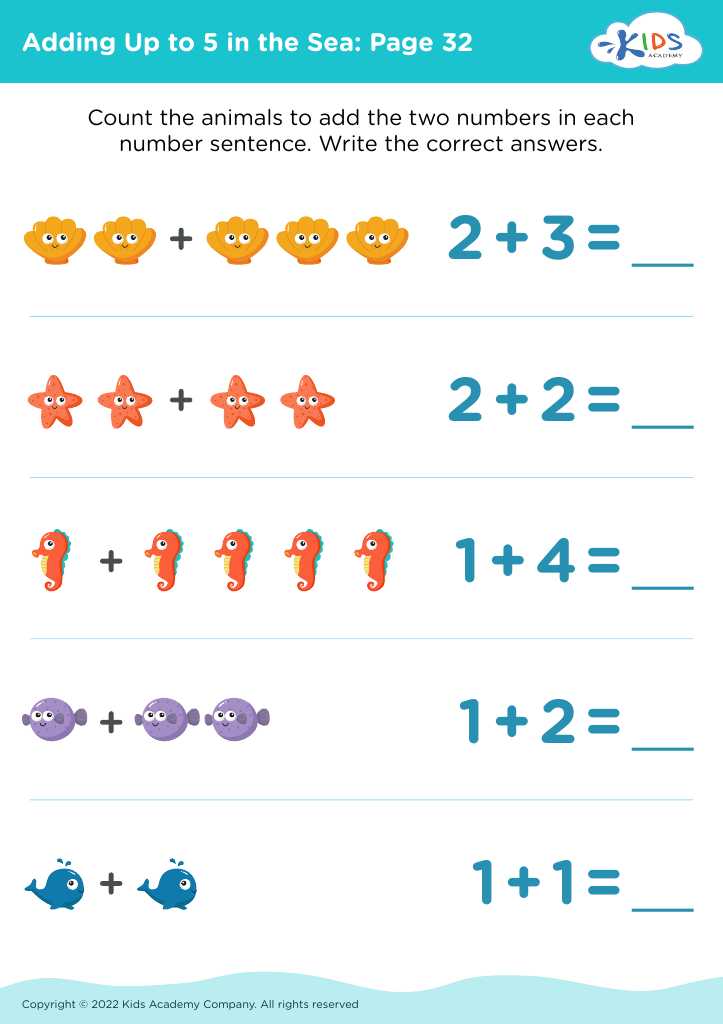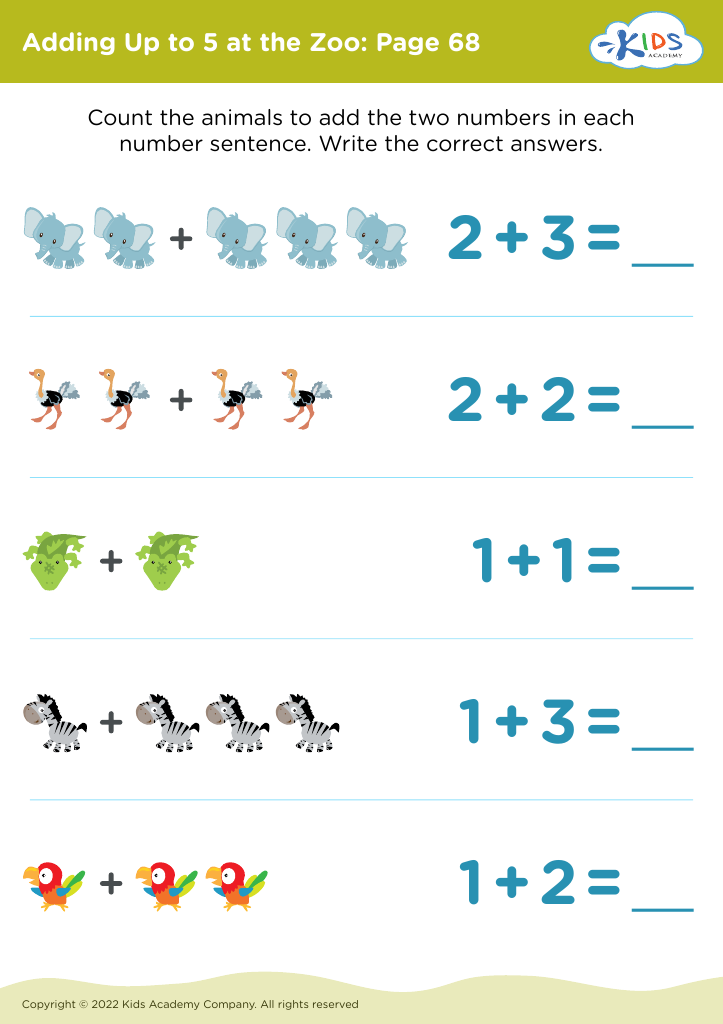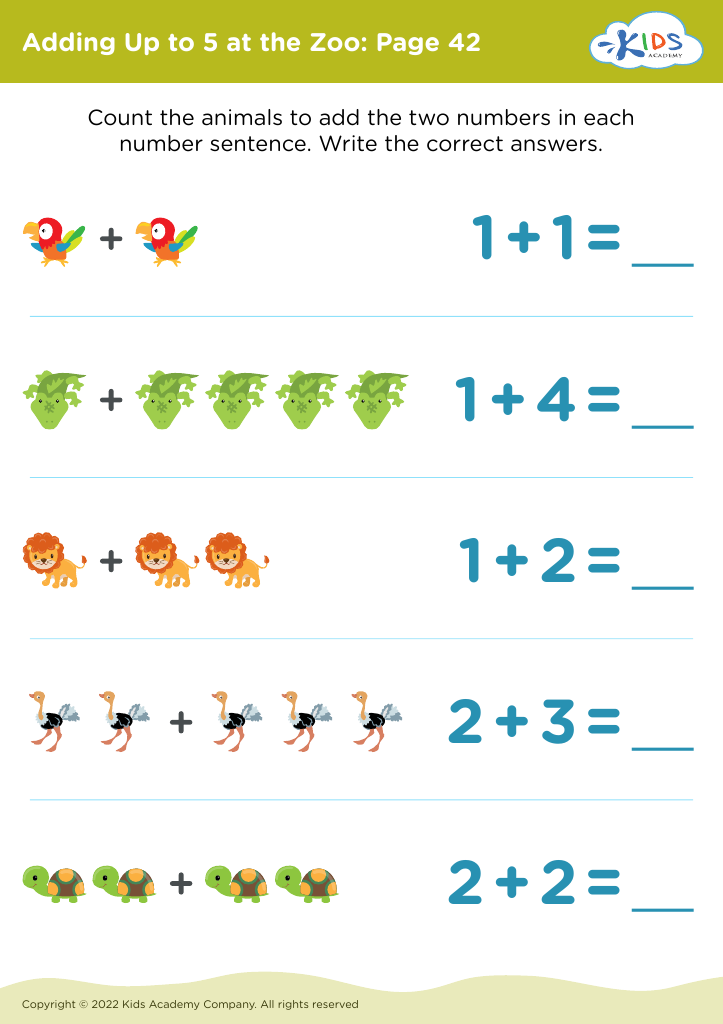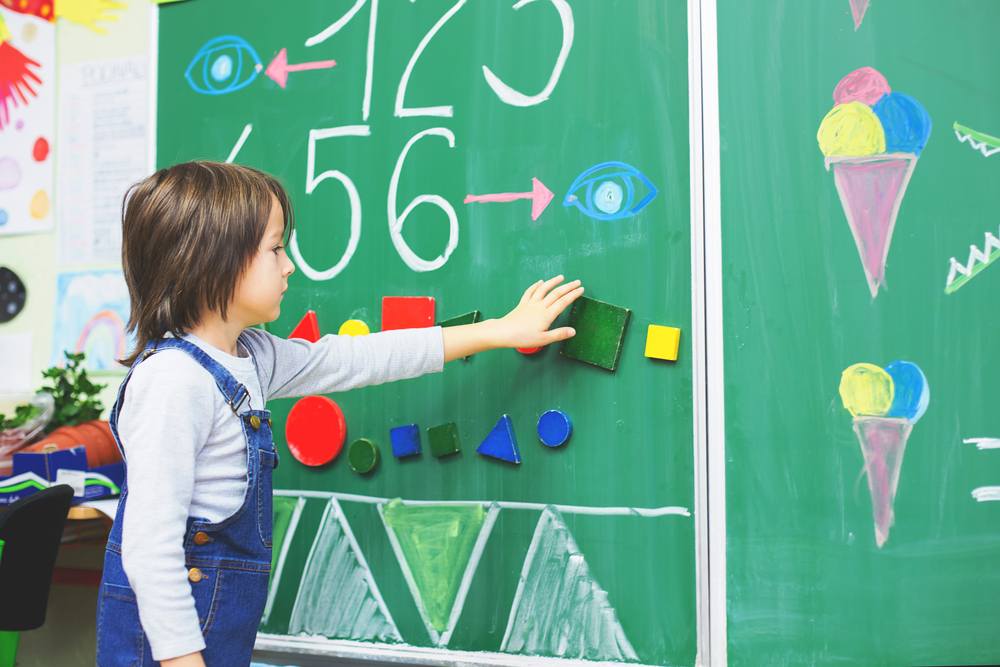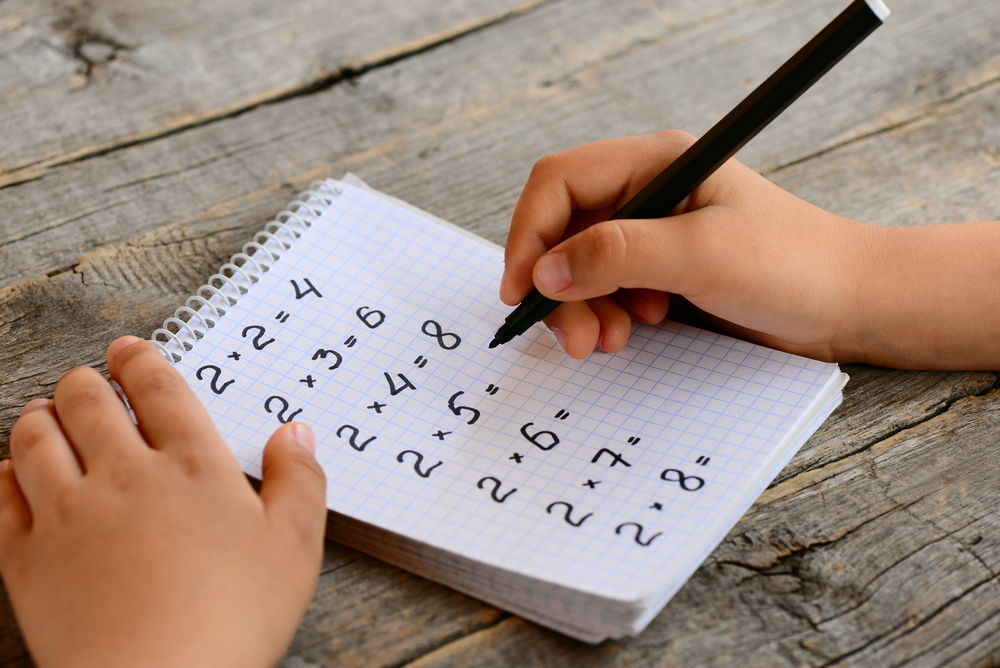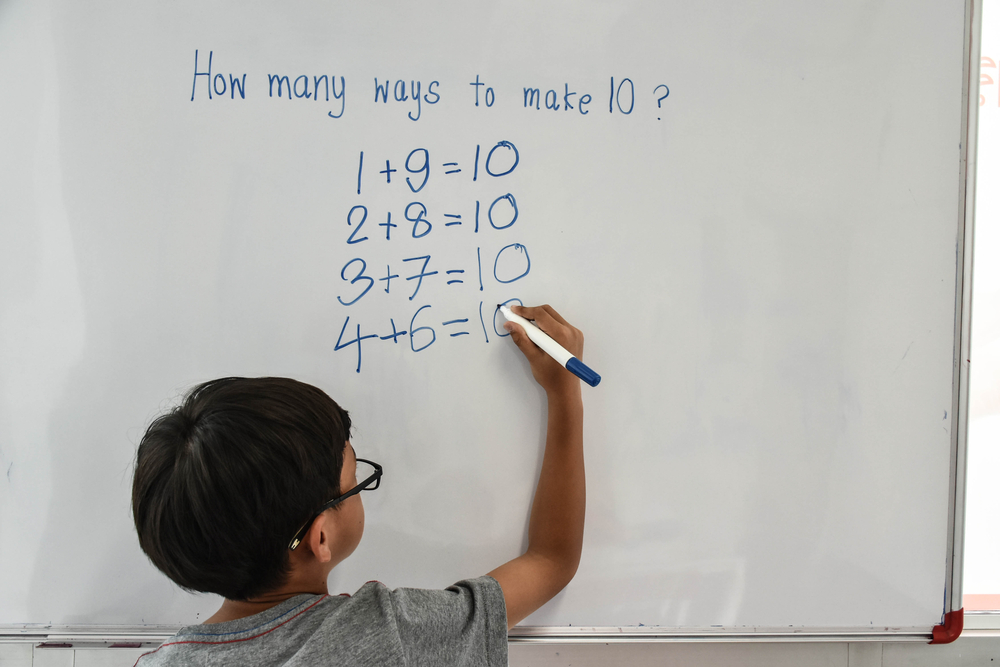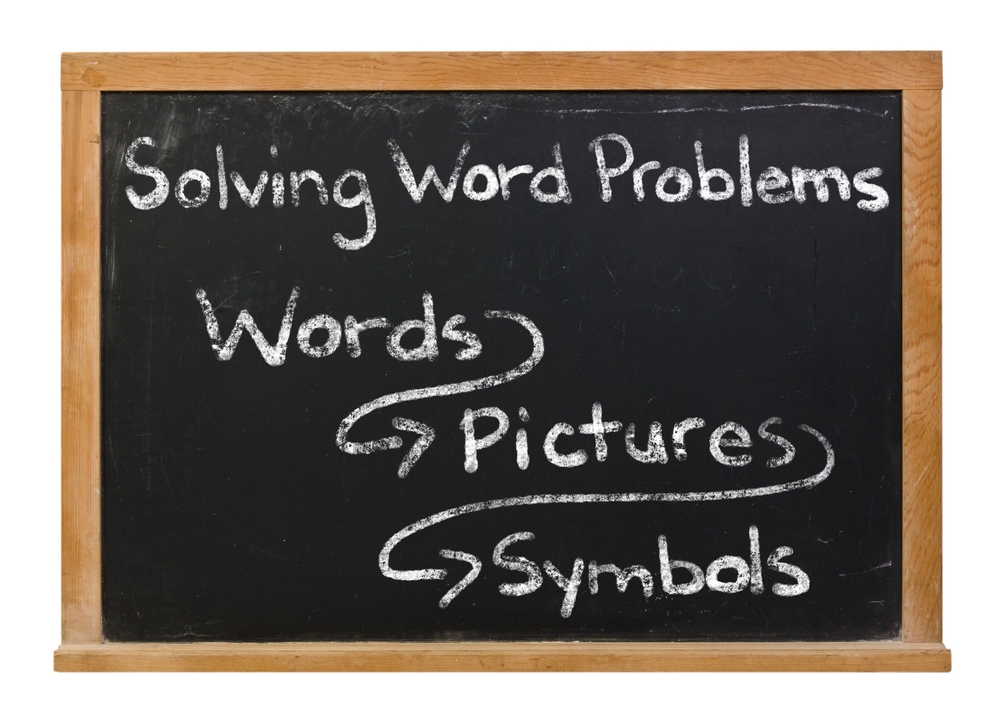Following instructions Addition & Subtraction Worksheets for Ages 3-5
6 filtered results
-
From - To
Introduce your little learners to the world of math with our "Following Instructions Addition & Subtraction Worksheets for Ages 3-5". These engaging worksheets are designed to develop foundational math skills in young children through fun and interactive activities. By following simple instructions, children will explore basic addition and subtraction concepts while enhancing their problem-solving abilities and attention to detail. Ideal for preschool and kindergarten students, these printable resources will make learning math both enjoyable and rewarding. Download our worksheets today and start building your child's confidence in math!
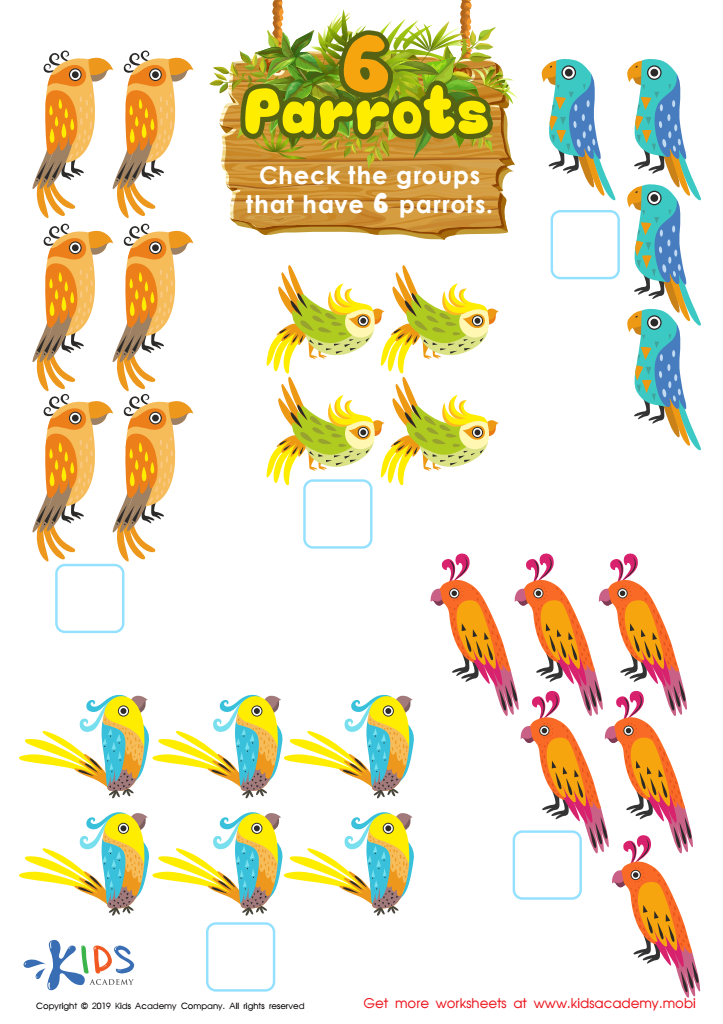

6 Parrots Worksheet
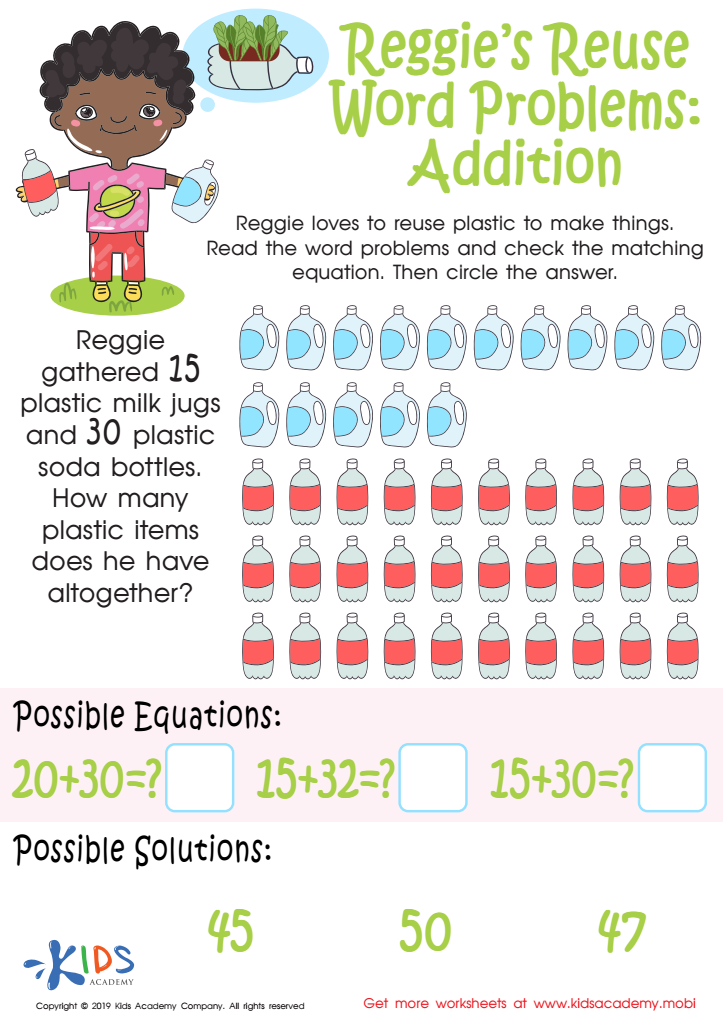

Reggie's Reuse Word Problems: Addition Worksheet
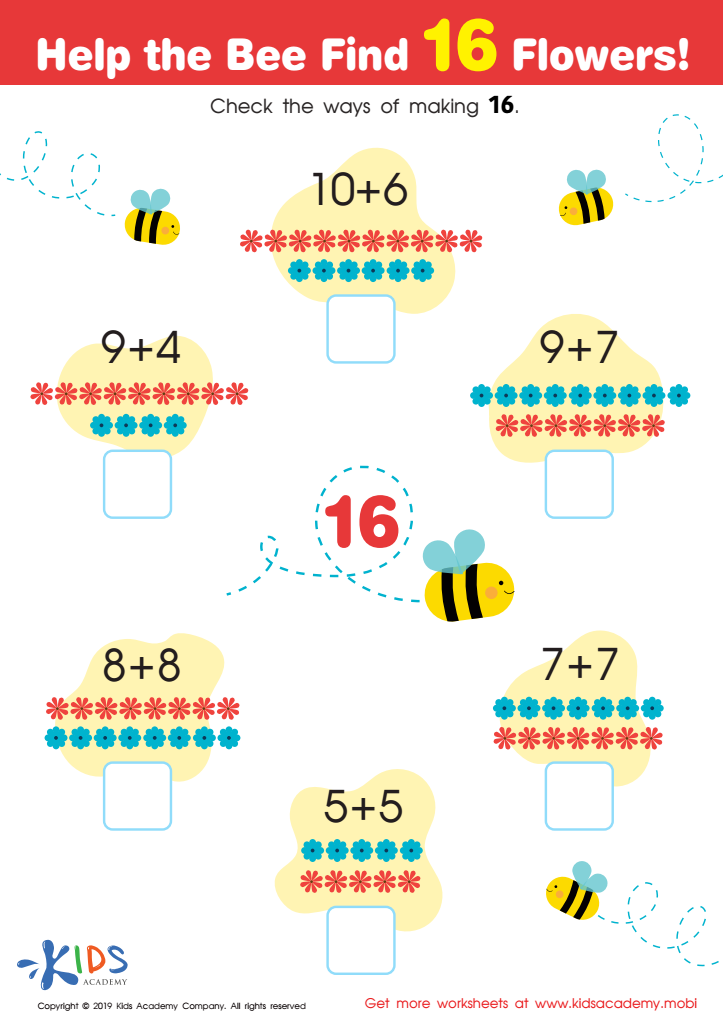

Help the Bee Find 16 Flowers Worksheet
Parents and teachers should prioritize teaching addition and subtraction to children aged 3-5 because early math skills are fundamental building blocks for future academic success and cognitive development. This critical period of early childhood is when brains are most receptive to new information and skills. Incorporating basic arithmetic like addition and subtraction helps tighten a child’s number sense, which is their understanding of numbers and their relationships.
Teaching these concepts also supports the development of problem-solving skills. As children learn to find the sum or difference between numbers, they are practicing critical thinking and logical reasoning that will benefit them across multiple disciplines.
Additionally, early mastery of these skills boosts children’s confidence. When young learners grasp fundamental math concepts, they experience a sense of accomplishment that encourages a positive attitude toward lifelong learning. This confidence is particularly important because children’s attitudes toward math formed at a young age can influence their future engagement and success in the subject.
Finally, math skills are intertwined with other development milestones such as following instructions and concentration. Activities that include math problems also teach children how to follow multi-step directions, stay focused, and complete tasks. Overall, introducing addition and subtraction early sets the stage for a solid educational foundation and a positive learning trajectory.
 Assign to My Students
Assign to My Students
